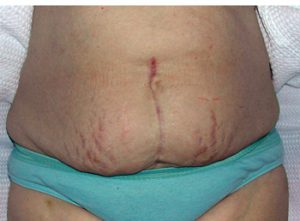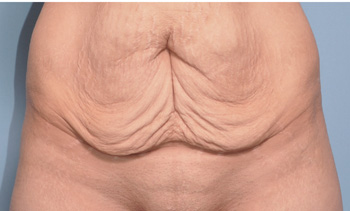Tummy Tuck
Tummy Tuck Surgery
Barry L. Eppley, MD, DMD, is a highly skilled tummy tuck surgeon who has years of experience helping his tummy tuck (abdominoplasty) patients achieve a firmer, shapelier torso. View his tummy tuck before and after pictures of his Indianapolis patients as well as those from across Indiana.
Tummy Tuck Surgery – Doing What Diet and Exercise Can’t
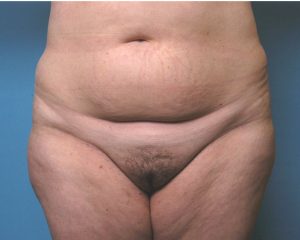
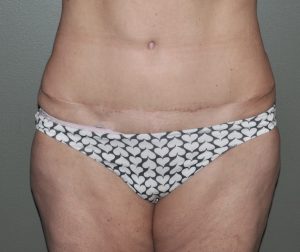 An abdomen that is fuller or that protrudes more than one desires can be the result of too much fat, loose or stretched out abdominal muscles from pregnancy, or excessive skin from weight loss or combinations of any or all of the above. This condition is quite common and responds poorly to diet or exercise as these efforts will not eliminate redundant skin, loose muscles, or significant abnormal fat accumulations. Only surgical excisions with or without liposuction of these tissues (tummy tuck) can get an improved abdominal shape.
An abdomen that is fuller or that protrudes more than one desires can be the result of too much fat, loose or stretched out abdominal muscles from pregnancy, or excessive skin from weight loss or combinations of any or all of the above. This condition is quite common and responds poorly to diet or exercise as these efforts will not eliminate redundant skin, loose muscles, or significant abnormal fat accumulations. Only surgical excisions with or without liposuction of these tissues (tummy tuck) can get an improved abdominal shape.
The Three Components of a Tummy Tuck
A tummy tuck or abdominoplasty surgery is designed to improve the contour of the abdomen by removing skin and fat and tightening the midline (rectus) muscles. Every tummy tuck takes into consideration how much skin needs to be removed, where fat can be removed by liposuction and if muscle tightening needs to be done.
The amount of skin removal determines what type of tummy tuck it is (full, mini- or extended) and the resultant abdominal scar pattern that will result. Liposuction of the flanks (love handles) can be safely done with many tummy tucks as it lies outside of the blood supply of the blood supply to the abdominal skin. Liposuction of the upper abdomen is often done with mini-tummy tucks so as to not interfere with the healing of the lower abdominal incision. It is also done in a more limited fashion in the upper abdominal region in full tummy tucks to help reduce the upper abdominal fullness but not compromise the healing of the tummy tuck incision. Sewing of the rectus muscles back together to fix a rectus diastasis or loose muscles adds an additional abdominal wall tightening effect. It is done in most, but not all, tummy tuck surgeries. (e.g., it is not usually done in men)
Mini- vs. Full Tummy Tuck
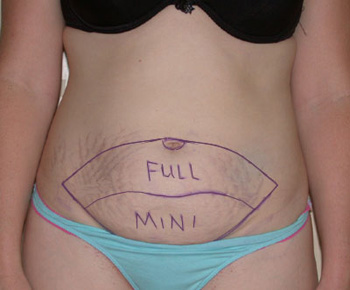 The two basic types of cosmetic tummy tucks are fundamentally differentiated by the amount of abdominal skin removed and the length of the horizontal scar. A full tummy tuck removes a horizontal ellipse of abdominal skin that goes above the belly button. More abdominal skin and fat is removed and a resultant scar around the new belly button hole will result. The mini-tummy tuck removes skin and fat below the belly button and, as a result, creates a shorter horizontal scar and no scar around the belly button.
The two basic types of cosmetic tummy tucks are fundamentally differentiated by the amount of abdominal skin removed and the length of the horizontal scar. A full tummy tuck removes a horizontal ellipse of abdominal skin that goes above the belly button. More abdominal skin and fat is removed and a resultant scar around the new belly button hole will result. The mini-tummy tuck removes skin and fat below the belly button and, as a result, creates a shorter horizontal scar and no scar around the belly button.
The decision between a mini- or a full tummy tuck is made based on how much of an abdominal pooch or fullness exists and the length of the scar needed to remove it. While many women understandably would prefer to have a short scar mini-tummy tuck, this decision must be made very carefully to avoid a suboptimal result with not enough tissue removed.
The Abdominal Panniculectomy
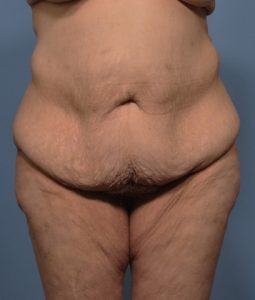
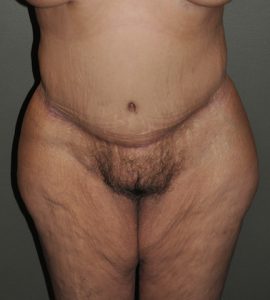 A unique form of a tummy tuck is the abdominal panniculectomy. It is not a true tummy tuck in the classic sense of addressing all three tissue components. Rather it is a more ‘simplified’ type of tummy tuck in which only the abdominal overhang (pannus) is removed. This is often done after large amounts of weight loss have occurred or one is still significantly overweight and the abdominal pannus is causing issues of hygiene or back pain. The resultant length of the horizontal abdominal scar is often longer around the waistline than in a traditional full tummy tuck.
A unique form of a tummy tuck is the abdominal panniculectomy. It is not a true tummy tuck in the classic sense of addressing all three tissue components. Rather it is a more ‘simplified’ type of tummy tuck in which only the abdominal overhang (pannus) is removed. This is often done after large amounts of weight loss have occurred or one is still significantly overweight and the abdominal pannus is causing issues of hygiene or back pain. The resultant length of the horizontal abdominal scar is often longer around the waistline than in a traditional full tummy tuck.
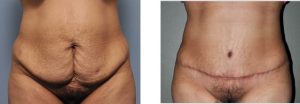
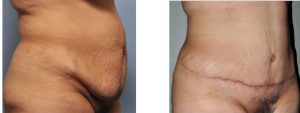 Some abdominal pannuses have an unusual appearance due a prior vertical midline scar. Old style vertical abdominal incisions (e.g., c-section) will create a split or cleft down the center of the pannus. Patients often refer to this as having a ‘butt’ on the lower abdomen due to two mounds on each side of the scar. A full tummy tuck will completely get rid of the frontal buttocks appearance.
Some abdominal pannuses have an unusual appearance due a prior vertical midline scar. Old style vertical abdominal incisions (e.g., c-section) will create a split or cleft down the center of the pannus. Patients often refer to this as having a ‘butt’ on the lower abdomen due to two mounds on each side of the scar. A full tummy tuck will completely get rid of the frontal buttocks appearance.
The Fate of the Belly Button in Tummy Tuck Surgery
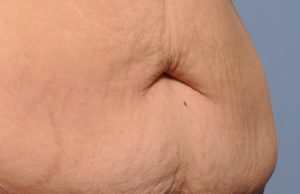
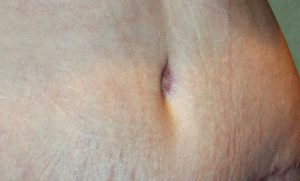 What happens to a belly button after a tummy tuck? That depends on what type of tummy tuck is being performed. In a full tummy tuck, the old stalk of the belly button is preserved (it may be shortened) but cut around and the upper abdominal flap pulled over it. Then a hole is made to bring the original stalk of the belly button back out. A scar results around the belly button but it is the original belly button (just with a new hole in the skin). In a mini-tummy tuck, the belly button is detached from the abdominal wall from underneath and the outer stalk is allowed to ride down or ‘float’ as the surrounding skin is pulled down. This places the belly button in a new lower position but no scar is evident on the outer skin surface. In either type of tummy tuck, a new belly button is not really made. Rather the original belly button is either moved or a new hole made for it through the skin.
What happens to a belly button after a tummy tuck? That depends on what type of tummy tuck is being performed. In a full tummy tuck, the old stalk of the belly button is preserved (it may be shortened) but cut around and the upper abdominal flap pulled over it. Then a hole is made to bring the original stalk of the belly button back out. A scar results around the belly button but it is the original belly button (just with a new hole in the skin). In a mini-tummy tuck, the belly button is detached from the abdominal wall from underneath and the outer stalk is allowed to ride down or ‘float’ as the surrounding skin is pulled down. This places the belly button in a new lower position but no scar is evident on the outer skin surface. In either type of tummy tuck, a new belly button is not really made. Rather the original belly button is either moved or a new hole made for it through the skin.
Tummy Tucks and Liposuction
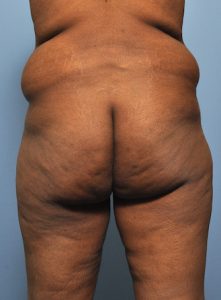
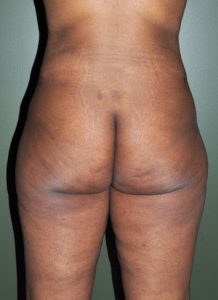 To help improve the results from a tummy tuck, liposuction is often performed at the same time. It is usually done beyond the ‘reach’ of the tummy tuck to the sides of the waistline and almost always includes the flanks or love handles. In some cases a portion of the upper abdominal (tummy tuck) flap may be liposuctioned to thin it out as it is brought down to close over where the abdominal tissues were removed. But this must be done conservatively so as to not cause healing problems of the incision.
To help improve the results from a tummy tuck, liposuction is often performed at the same time. It is usually done beyond the ‘reach’ of the tummy tuck to the sides of the waistline and almost always includes the flanks or love handles. In some cases a portion of the upper abdominal (tummy tuck) flap may be liposuctioned to thin it out as it is brought down to close over where the abdominal tissues were removed. But this must be done conservatively so as to not cause healing problems of the incision.
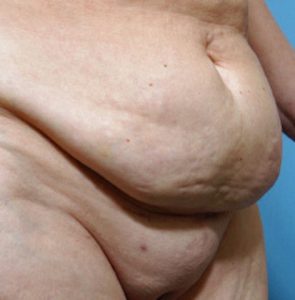
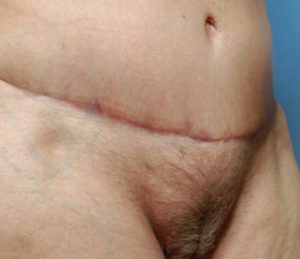 Liposuction may also be performed below the tummy tuck in the pubic area. Often after a tummy tuck one can be left with a pubic mound or a bulging pubis if this area is neglected during the procedure. In some cases a simultaneous pubic lift may also be incorporated into the design of the tummy tuck to improve a sagging and full pubic mound.
Liposuction may also be performed below the tummy tuck in the pubic area. Often after a tummy tuck one can be left with a pubic mound or a bulging pubis if this area is neglected during the procedure. In some cases a simultaneous pubic lift may also be incorporated into the design of the tummy tuck to improve a sagging and full pubic mound.
Tummy Tucks in Darker Skin Patients
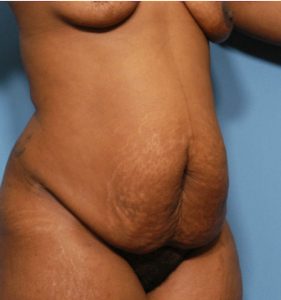
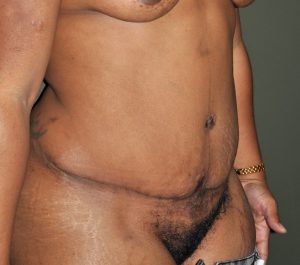 Because of the need for a low horizontal scar that may need to be placed from hip to hip, or even longer, there are always concerns about how such a scar will heal and look. This tummy tuck scar concern is elevated in patients who have more pigment in their skin and are risk for poor scarring or even keloid scar concerns. (e.g., African-American, Hispanic and Asian patients) While more skin pigment does increase the risk of hyper pigmentation along the scar line, it has not been my extensive tummy tuck experience that the scar results are necessarily any worse than in lighter skin patients.
Because of the need for a low horizontal scar that may need to be placed from hip to hip, or even longer, there are always concerns about how such a scar will heal and look. This tummy tuck scar concern is elevated in patients who have more pigment in their skin and are risk for poor scarring or even keloid scar concerns. (e.g., African-American, Hispanic and Asian patients) While more skin pigment does increase the risk of hyper pigmentation along the scar line, it has not been my extensive tummy tuck experience that the scar results are necessarily any worse than in lighter skin patients.
Qualifications for a Tummy Tuck
Surgery should never be a complete substitute for weight loss efforts and is not usually performed on very obese individuals. The ideal candidate for an abdominoplasty has maximized their weight loss, established better eating habits, begun some type of exercise program, and quit smoking before surgery. Candidates for tummy tuck surgery should also be within 10 to 25 lbs. of their desired (and realistic) body weight for the best result.
Does Insurance Cover Tummy Tucks?
Medical insurance does not usually provide coverage of an elective cosmetic tummy tuck. The fact that there may be a rectus diastasis (which is not a hernia) does not qualify as a medical problem as there is no defect in the abdominal wall. In circumstances where a large abdominal pannus hangs onto the upper thighs (after weight loss for example), has a documented medical history of recurrent skin infections in the underlying skin fold, and one is within 30% of their ideal body weight, insurance may provide coverage for an abdominal panniculectomy procedure to obtain medical relief of the skin fold problems.
To help his tummy tuck patients achieve a more refined appearance, Dr. Barry Eppley may use a variety of procedures to help his liposuction surgery and mommy makeover patients remove stubborn fat deposits.
Tummy Tuck – Before Surgery
The stomach and waistline area is evaluated to determine which combination of procedures may be effective (liposuction, mini-abdominoplasty, full abdominoplasty). The location and width of the surgical scar and the amount of anticipated skin removal from the procedure is pointed out. Photographs are taken for documentation and to evaluate the amount of improvement postoperatively. The procedure is discussed and realistic expectations are reviewed.
It is very important that any medications which contain aspirin are stopped at least two weeks prior to surgery. In addition, the cessation of smoking at least one month prior to surgery is optimal to prevent potential problems with skin healing.
Tummy Tuck – Operation
Abdominoplasty is performed either in a hospital or outpatient surgery center setting under general anesthesia. There are essentially two basic types of abdominoplasties which are from a more minor to major type procedure dependent upon the patient’s abdominal problem. In the more limited mini-abdominoplasty, which is suited for loose abdominal muscles with minimal excessive skin and fat, an incision is made within the pubic hairline. This permits a small amount of overlying skin and fat to be removed and the rectus muscles sewn together. In the more extensive abdominoplasty, a u-shaped incision is made from one hip bone to the other crossing the pubic area. The skin is then undermined up to the ribs. This wide exposure permits the abdominal muscles to be tightly sewn together. The abdominal skin is then lowered and stretched out to reach the lower incision. Excessive skin and fat is removed and the incision closed. The navel is reconstructed by bringing it up through the lowered abdominal skin. Plastic drains will exit from the ends of the closed incision over the hip bones and prevents fluid buildup postoperatively. In most cases, liposuction of the waistline and flanks is performed to obtain the best result. A soft gauze dressing is then applied over the abdomen and a compression garment is applied.
Tummy Tuck Recovery
Some patients who undergo a full abdominoplasty may often need to remain in the surgery center if they are from far away or have had other simultaneous face or body procedures. In most patients, it can be performed as an outpatient. A mini-abdominoplasty can always be done as an outpatient. Pain can be expected to be moderate and will initially be felt with every movement but is managed with oral medications. The compression should be worn for several weeks and may be taken off to shower. Drains will be removed between one to two weeks after surgery. Most of the time, sutures are placed underneath the skin and do not need to be removed.
Strenuous physical activity (e.g., lifting, running, straining) should be avoided for four to six weeks. One may resume normal, non-strenuous activities as one feels comfortable. While this surgery can produce a remarkable change in one’s abdominal appearance, it is important to appreciate its magnitude and most patients will need a slightly longer recovery than anticipated. Incision scars will remain from the operation but will fade significantly by one year.
Significant complications from this procedure are rare. Minor complications include the potential for fluid buildups underneath the abdominal skin, delayed healing of the skin incisions and navel, and excess skin (‘dog-ears’) at the ends of the abdominal incision.

North Meridian Medical Building
Address:
12188-A North Meridian St.
Suite 310
Carmel, IN 46032
Contact Us:
Phone: (317) 706-4444
WhatsApp: (317) 941-8237
